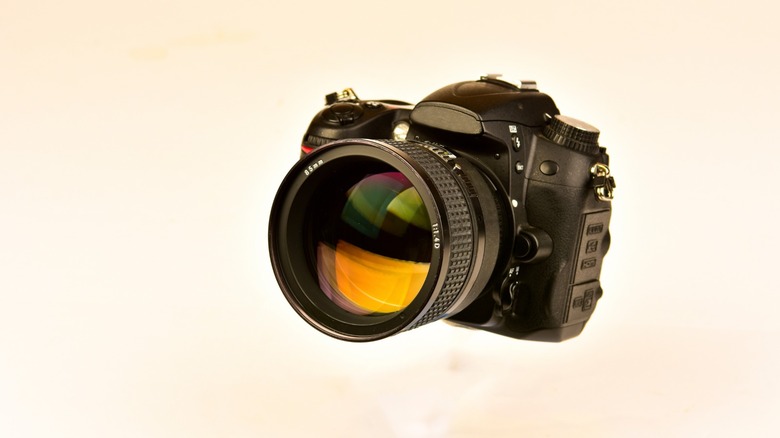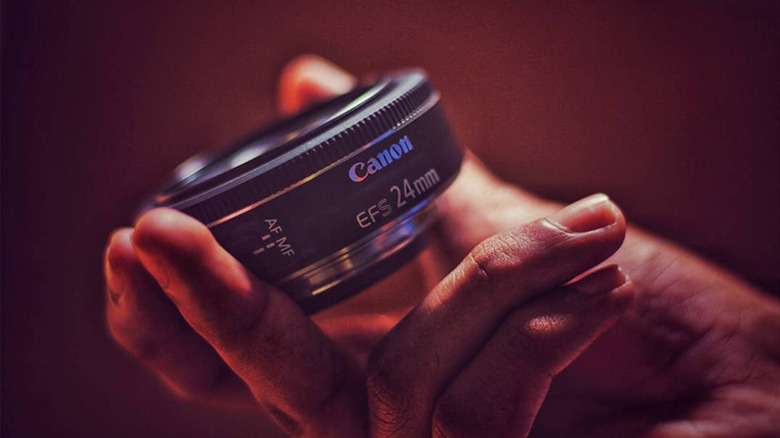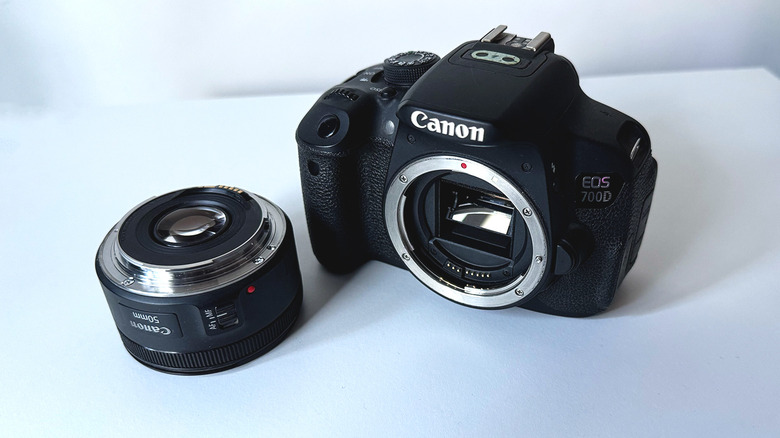3 Cheap Prime Lenses To Add To Your Camera Gear
We may receive a commission on purchases made from links.
The phones in our pockets may have gotten impressively versatile at capturing life's moments as they happen, but there are still reasons to pick a DSLR over a smartphone camera. You get a larger physical sensor that directly contributes to sharper and more detailed images. Digital cameras also let you go full manual mode to adjust for the perfect shot, no matter the scene's condition. The biggest reason to grab a digital camera, however, is the added convenience and flexibility of swapping lenses.
Most listings often pack in one or two "kit" lenses, and these are great starting points for anyone getting into photography or videography. These lenses offer the benefit of changing the focal length, which yields noticeably different compositions — but they often trade specialization for versatility. On the other hand, you have lenses that have a fixed focal length — and these are dubbed as prime lenses.
As someone who takes great delight in product photography and videography, I've played around with a variety of camera lenses — and while the sky's the limit if you have no budget restrictions whatsoever, shopping in the affordable segment is what's always challenging. Fortunately, you don't need to shell out a lot of money to get a reliable prime lens for your camera. With experience as both a photographer and videographer over the years, here are three budget-friendly prime lenses that I can wholeheartedly recommend to those looking to expand their camera gear.
Prime lenses for every occasion
Compared to traditional glass, prime lenses are fixed in focal length and allow you to frame your shots more intentionally — all the while weighing less. You can buy lenses from various manufacturers, with different fixed focal lengths, and varying apertures.
Known in the camera world as the "nifty fifty," the Canon 50mm f/1.8 STM lens ranks high as one of the essential lenses you should buy. When paired with a full-frame sensor, its focal length is close to what the human eye naturally sees — just with luscious amounts of bokeh and great low-light capabilities thanks to its lower f-stop. It retails at $135 on Amazon and is a no-brainer at that price. I've been using one for nearly a decade, and despite it being the equivalent of 80mm on an APS-C cropped-sized sensor, the nifty fifty is the best money you'll spend if you're just starting out.
At close to $160, the Canon EF-S 24mm f/2.8 STM is similarly priced, and gets you a noticeably wider field of view than the nifty fifty on an APS-C camera — albeit with a higher aperture. It's likely the smallest and lightest lens you'll be carrying around, which is impressive given how versatile it is for capturing wider-angle shots.
The Yongnuo 35mm f/2.0 is another solid pick that slots in between both offerings from Canon. It's priced at around $100 and is ideal for portraits and street photography.
How to choose your next prime lens
Although the three prime lenses we've recommended can be picked up relatively cheaply, there are several factors to look out for when buying a camera lens. The first thing to check is the mounting system, since lenses aren't universally compatible across all cameras — Canon uses the EF, EF-S, and RF mounts, Nikon uses the F and Z mounts, and Sony requires the A or E mounting systems.
While the Canon 50mm we've recommended is compatible out of the box with Canon cameras, you will need to look for an equivalent option if you own a Sony or Nikon camera — or at the very least, pick up a lens mount adapter. That said, sticking to native mounts will ensure you don't lose any quality or autofocus performance.
Picking the right focal length when eyeing a prime lens is also crucial, since you won't be able to change this while capturing photos or videos. Depending on your sensor crop, a 24mm or 28mm is ideal for landscapes and street photography, while 35mm and 50mm offer a natural perspective and are better suited for portraits of people or pets, in addition to product photography. You also have options at 85mm or 100mm for macro photography, though those options don't come as cheaply.


